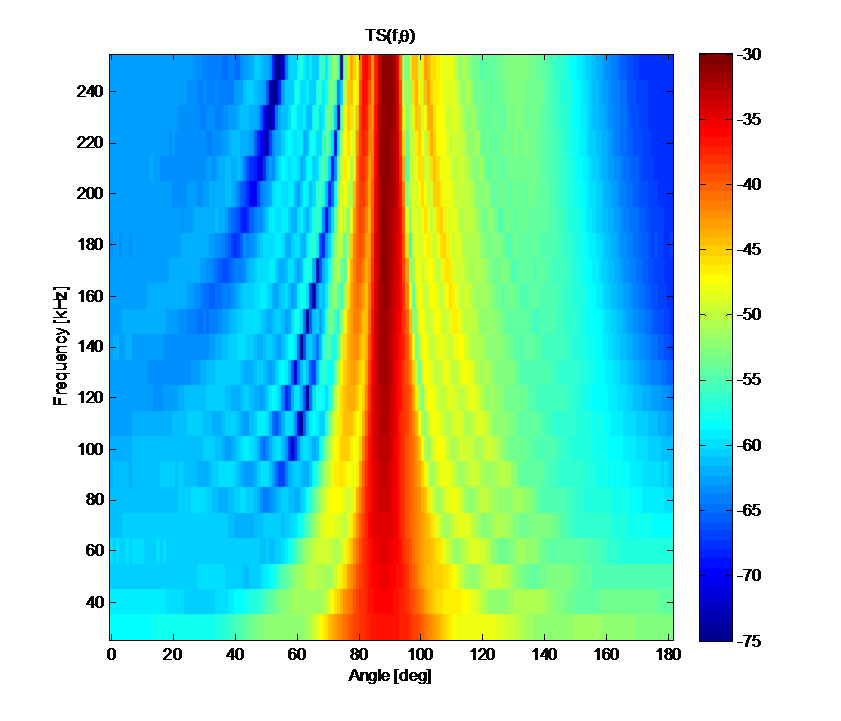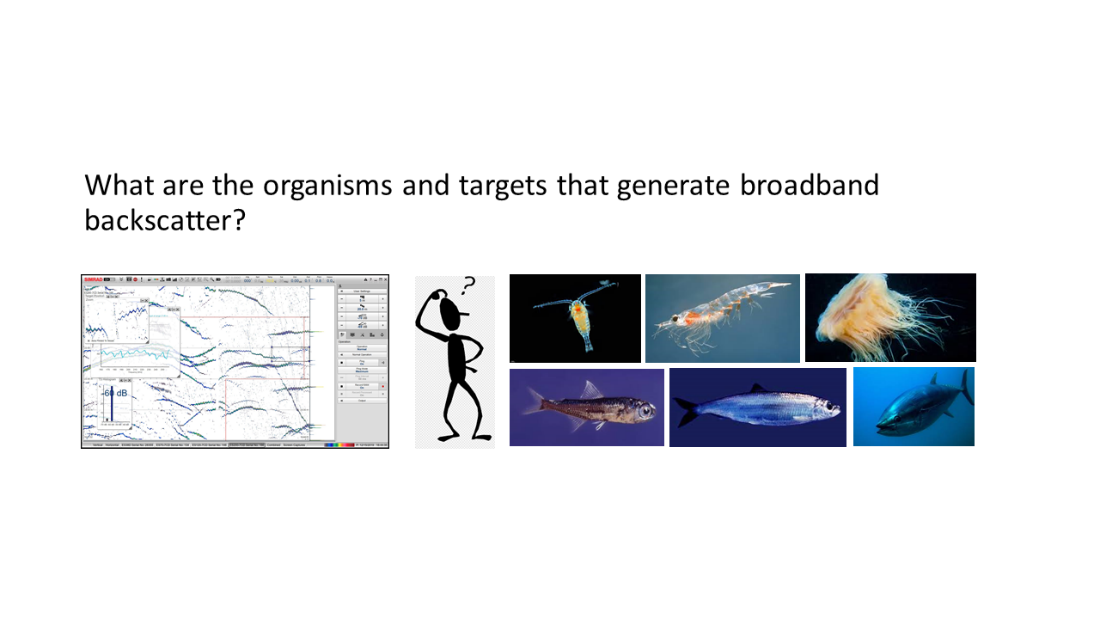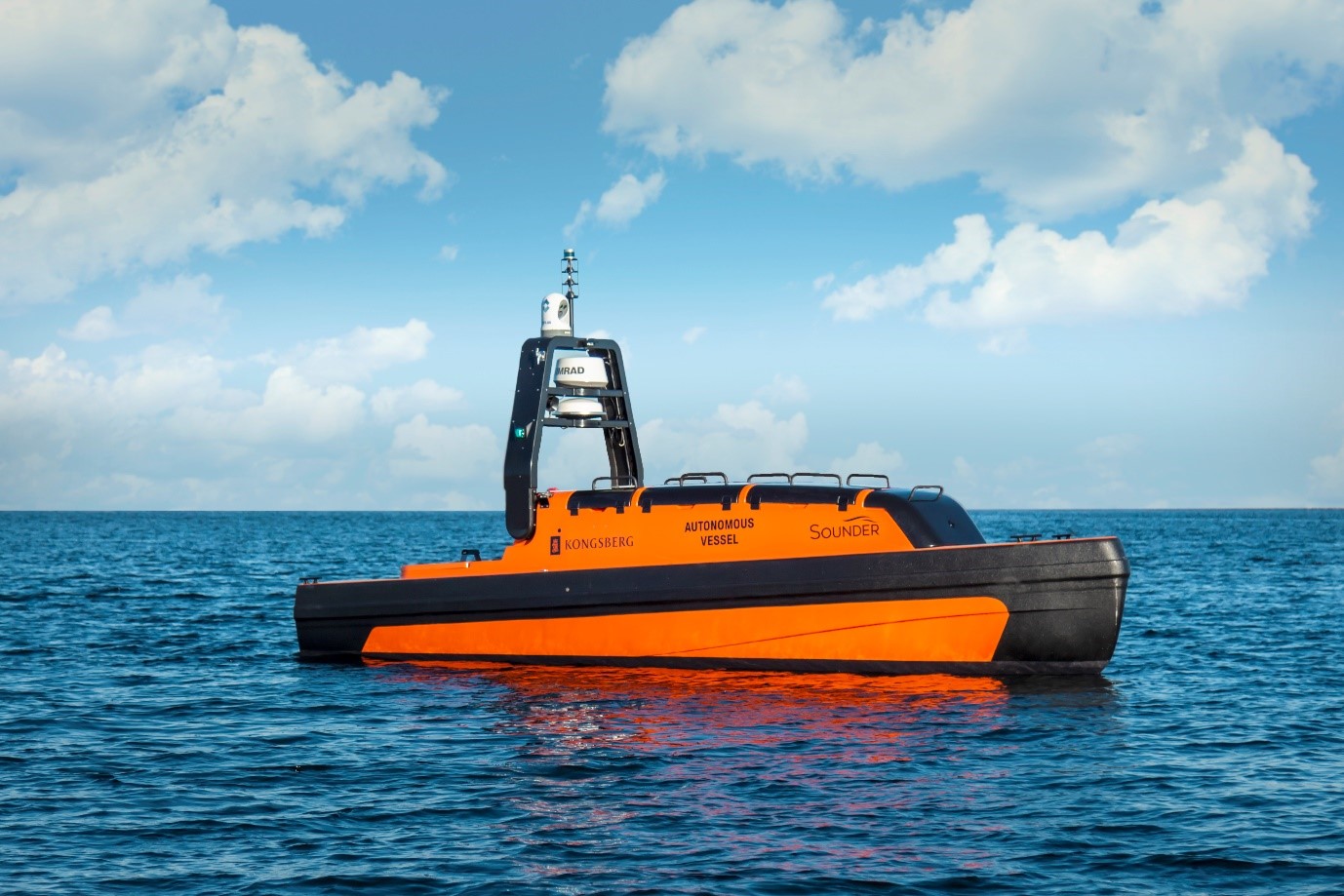About CRIMAC
The primary objective of the SFI is to advance the frontiers in fisheries acoustic methodology and associated optical methods, and to apply such methods to 1) surveys for marine organisms, 2) fisheries, 3) aquaculture and 4) the energy sector. This will be achieved via the following secondary objectives:
- Improve automatic interpretation of (wideband) fisheries acoustics, including sizing of targets (fish and bubbles), target identification and increased spatial resolution.
- Aid the target classification of fish and zooplankton by experimental measurements of known target and backscatter modelling.
- Collect reference data for machine learning projects on research vessels and in the commercial fishery with similar, calibrated instrumentation.
- Develop better verification methods using optical systems and dropped probes and working- drones.
- Develop automated classification systems based on modern machine learning methods.
- Work with the user partners to apply the techniques and instruments developed in 1) to 4), in scientific surveys, for sizing and species classification in fisheries, for sizing, growth and behavioural measurements in aquaculture, and improved gas and bubble detection systems for the energy sector
WP1: Understand the broadband echo spectrrum for classification
Responsible: Geir Pedersen
Scientific questions: What are and how do the various parts of marine organisms contribute to broadband backscatter?

The work will focus on understanding how the complex broadband frequency responses from marine organisms are generated, and how we can increase the information extracted from broadband acoustic signals. This will be achieved through research on acoustic modelling of broadband backscatter and development of signal processing methods for broadband data.
Understanding the complex broadband frequency response from marine scatterers require measurements (WP2) and modelling (WP1). WP1 will evaluate currently available models for broadband backscatter, with focus on numerical models able to use detailed internal structure of the organisms. Input to these models use x-rays, CT scans, and MRI scans of representative organisms. Where feasible, potential new implementations will be developed in freely available programming languages (e.g., Python and R).
WP1 will seek a comprehensive understanding of current broadband signal processing, as well as test and further develop broadband signal processing methods and protocols. This includes extracting narrowband information from broadband, broadband echo integration, standard power settings for reduced nonlinear effects, improved broadband calibration, new pulse forms, and noise removal methods.
WP2: Experimental measurements of backscatter
Project leader: Tonje N. Forland

Scientific questions: What are the broadband frequency responses of marine organisms and other scatterers?
This WP will develop methods for controlled measurements of broadband backscatter responses from a wide range of marine organisms and other scatterers. Important categories of organisms and targets are fish, gas bubbles, fish larvae, krill, copepods, and jellyfish. Existing knowledge about these organisms will be reviewed and used to prioritise our efforts.
Experimental measurements will occur in the large tanks and net pen mesocosms at IMR’s Austevoll and Matre research facilities and at-sea from vessels using hull-mounted echo sounders and close-range probing systems (and which will incorporate optical systems to provide target identification – see WP3). Enhancement of existing instruments will be necessary, such as the use of narrower opening angle transducers and the use of pulse compressed broadband signals for high range resolution, with the aim of better resolving individual organisms in aggregations. New transducers with increased bandwidth will be developed and used in this work package. Measurement on scatter from non-dorsal angles is of interest due to the increased use of non-horizontal sonar beams for quantitative surveys (e.g., sideways-looking echosounders) and within purse seine fisheries where the size information inside schools inspected must be extracted without passing over the school
WP3: Ground truthing methods
Project leader: Maria Tenningen
Scientific questions: What are the organisms and targets that generate broadband backscatter?

This WP will develop and implement techniques for identifying and measuring the sources of broadband backscatter detected in WP2. This will include optical verification tools, such as stereo cameras and high-resolution optic imaging systems. These tools will be integrated into a variety of sampling platforms (e.g., AUVs, USVs, trawls and stationary deployment in aquaculture pens). The sampling platforms will be upgraded as necessary to provide data in fine scale to match the broadband acoustic data. The WP will also develop more accurate trawl-based sampling methods, including more controlled trawl geometry and positioning in relation to targeted school and active discrete sampling methods that ensure representative sampling from specific locations or depths.
The work package will also evaluate and further develop sampling methods for acoustic surveys. This will involve improved video-trawling methods as well as sampling methods for autonomous acoustic surveys. This will require biological understanding of how different species and sizes react to fishing gears. As well as development and implementation of improved communication channels, data integration onboard, and processing methods and tools.
The WP involves close cooperation with the industry partners and aims to identify applications to commercial fisheries (e.g. video-trawling with active selection, trawl doors off bottom, automatic and dynamic trawl steering).
WP4: Machine learning and species categorization methods applied to fisheries acoustics and ground truthing data
Responsible: Nils Olav Handegard
Scientific questions: Can machine learning techniques reliably and accurately categorize acoustic backscatter?
This WP will apply machine learning tools on large volumes of acoustic data, with a focus on categorizing acoustic backscatter. The first step will be to prepare the datasets from major IMR acoustic surveys, both multifrequency and broadband, and prepare these for efficient access for modern machine learning libraries. This includes conversion and exposure of the data through open data formats and data servers. Similarly, existing labels will be converted to open formats and exposed through the same infrastructure. The next step will be to further develop supervised methods e.g. (Brautaset et al., 2020), using a combination of historical labels, experimental data, and ground truthing information (WP3). The intention is automating and reducing bias from the entire process of ground truthing and categorizing acoustic data and test it on the time series from the acoustic surveys. Subsequent steps will be to develop semi-supervised and unsupervised methods to extract classes that are not the target species, including bottom detections and samples dominated by noise. This will be particularly relevant for gas seep detection, plankton layers and other non-labelled categories. By clustering historical data and comparing the classes with the classes derived using broad band data, we expect to see an improvement in categorizing historical data.
WP5: Improving precision by autonomous platforms and survey and experimental designs
Responsible: Espen Johnsen (Arne Johannes Holmin)
Scientific questions: How to utilize acoustic sensors on autonomous platforms, assess uncertainty and utilize the effect of behaviour on acoustic backscatter?

The introduction of autonomous or remotely operated platforms provide an efficient way for deploying acoustic sensors. The platforms can either be run stand-alone or in conjunction with ships. They can also be used in a range of different applications, including scouting vessels for fishing operations and to augment RV based acoustic surveys. Different approaches to utilize these platforms will be explored, including various static and adaptive survey designs.
For any experiment or ecosystem monitoring, quantification of uncertainty is of key importance. How the uncertainty in automated acoustic target classification propagates to the use cases will be addressed, and we will use survey time series from a range of IMR surveys to test the impact of automating target classification.
Fish behaviour affects acoustic backscatter. This may cause biases in acoustic surveys and can be exploited to measure behavioural changes, e.g. associated with monitoring fish welfare in aquaculture pens. We will use modelling (echoIBM, WP1) combined with observations to approach this. Observations include multibeam sonar, doppler measurements as well as signals in BB backscatter. Autonomous or remotely operated platforms will also be explored to assess the effect of fish avoidance to research and fishing vessels.
Extracting gains for science and industry
Responsible: Tonny Algrøy

Industry question: How can the innovations achieved in CRIMAC be implemented in products by and for the user partners? What are the science needs for industry?
Development of products and services is the responsibility of the user partners. This WP is set up to support the transition from verified methods to products and services from the user partners. The WP should facilitate a close link and feedback between the CRIMAC partners by aligning individual goals with the overall SFI strategy.
The work package will maintain an overview of the user needs for all user partners (including IMR as a user partner), and report back to the MG. The task will also be to keep track of user activities and products that have received support from CRIMAC, and report this to the communication group.